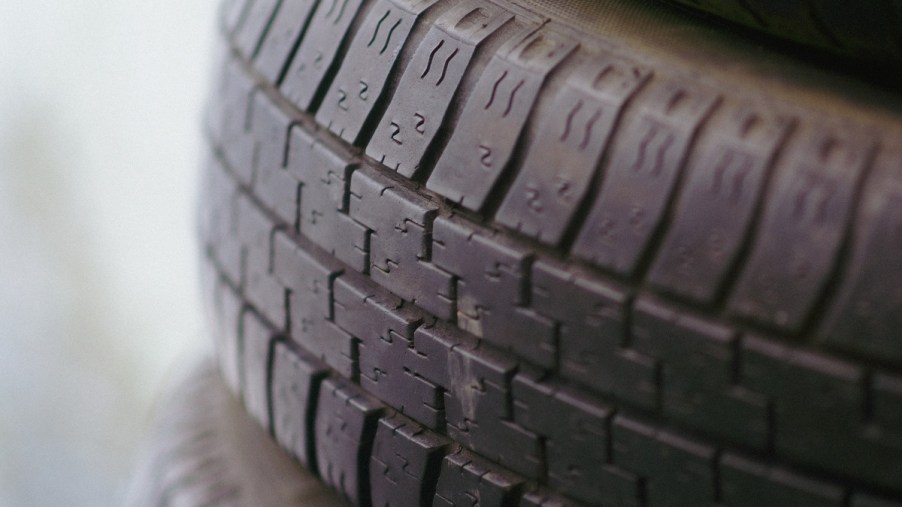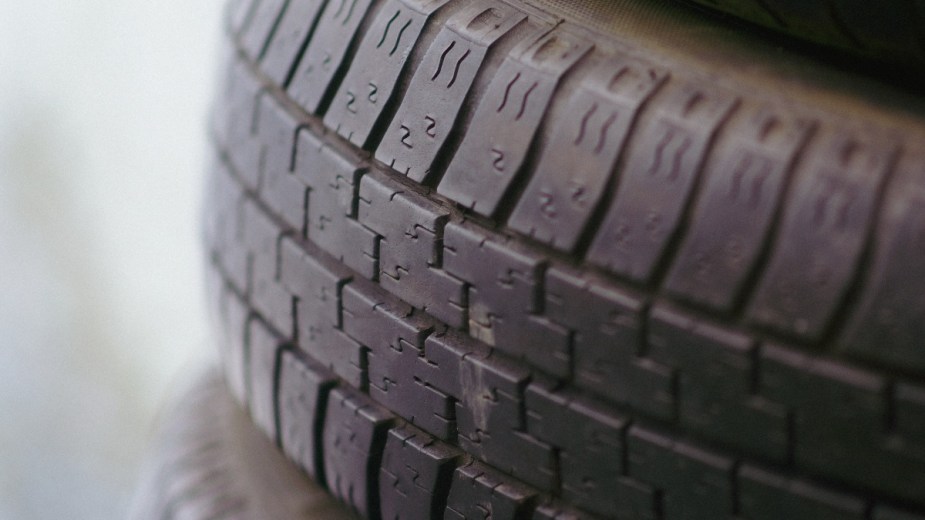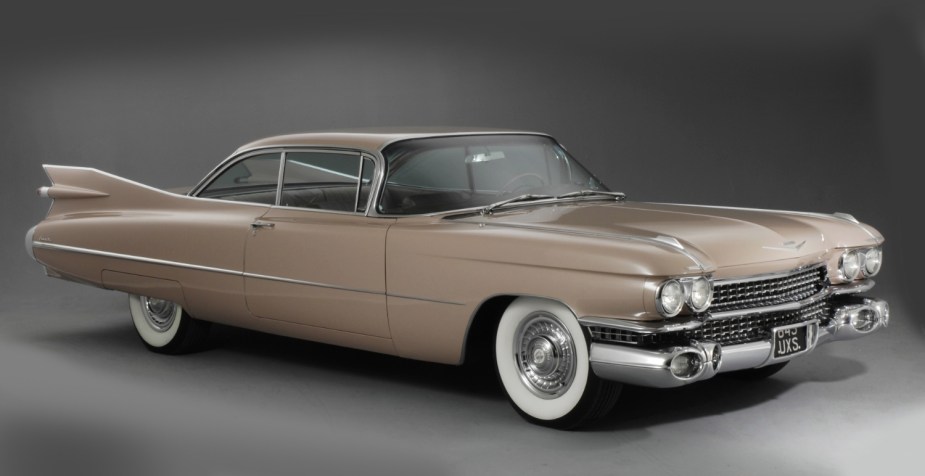
Why Are Car Tires Black — Instead of White?
Perhaps you didn’t realize this, but the natural rubber latex used in car tires has a milky white color. In the early days of automobiles, rubber tires were white. However, now, nearly all tires on vehicles are black. Why is this? Why are car tires black — instead of white?
The reason why car tires are almost always black

The reason why car tires are almost always black — instead of white — is the use of a material called carbon black in the manufacturing process. Carbon black gives car tires their black color. Manufacturers use carbon black due to its various benefits, including improving the performance, durability, and lifespan of tires.
History of car tires and the eventual use of carbon black
Prior to the use of rubber tires, cars typically had wooden wheels with a band of metal around the rim. These vehicles were “little more than motorized wooden carriages and buggies,” as detailed by Goodyear.
However, as cars became faster and performed better, early automakers realized that wooden wheels were holding the vehicles back. As one might expect, a car with wooden wheels had a jarring ride. Also, their traction was not good. This led to the invention of the first rubber car tire in 1895.

In the early 20th century, tire manufacturers experimented with various processes to improve the product. This includes the use of soot — blended into the rubber mixture. This soot, obtained from various industrial processes, turned the tires black. Tire manufacturers combined the soot with cotton threads to make the tires more durable and stable — along with a greater ability to shed heat.
Eventually, the use of soot led to the usage of carbon black, a chemical material in modern car tires.
Occasionally, classic and luxury cars feature whitewall tires, which are tires with a traditional black tread — but with a white sidewall. Also, some truck tires have outlined white lettering. However, the white color in both the white lettering and whitewall tires doesn’t contain carbon black.
What is carbon black?
The carbon black in car tires is a chemical material created from the combustion of various petroleum products. Along with tires, other uses for carbon black include a UV stabilizer and a pigment. Manufacturers also use carbon black as an insulating or conductive agent for various rubber, ink, plastic, and coating applications.
What are the benefits of carbon black?
The use of carbon black improves the durability and increases the lifespan of tires. An average tire lasts around 60,000 miles. Also, some tires last even longer. However, without the use of carbon black, chemical engineers found that tires would probably last only 5,000 miles or less.
The increased durability and lifespan of tires with carbon black are due to a number of factors. For one, carbon black increases tensile strength. It also increases abrasive resistance as tires face the brunt of rolling along the ground.
Additionally, carbon black conducts heat away from the belts and the tread of tires. Furthermore, it protects tires from damaging UV rays and ozone.
The increased strength from the use of carbon black in tires also aids a vehicle’s performance. This includes acceleration, braking, and cornering abilities. Another benefit of carbon black is that it makes tires more electrically conductive. Without carbon black, static charges could build up in a car as it travels, leading to a shock. This same conductive property also enables a vehicle to safely withstand the impact of a lightning strike.
Additionally, black tires are easier to clean. As any owner of a classic car with whitewall tires can tell you, it can be difficult to keep dirt and debris from discoloring the tires. In contrast, black tires typically retain their fresh look while they roll along the road.


